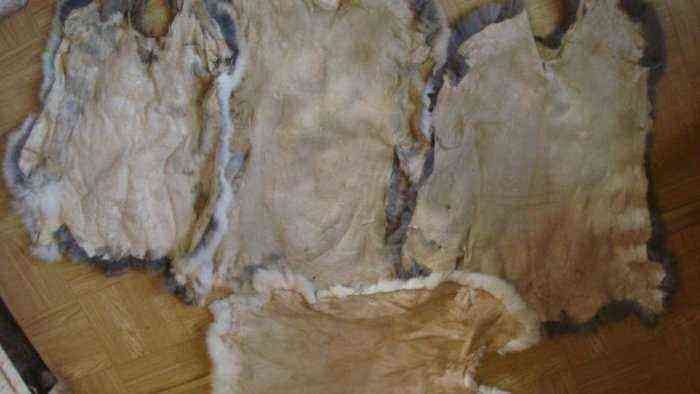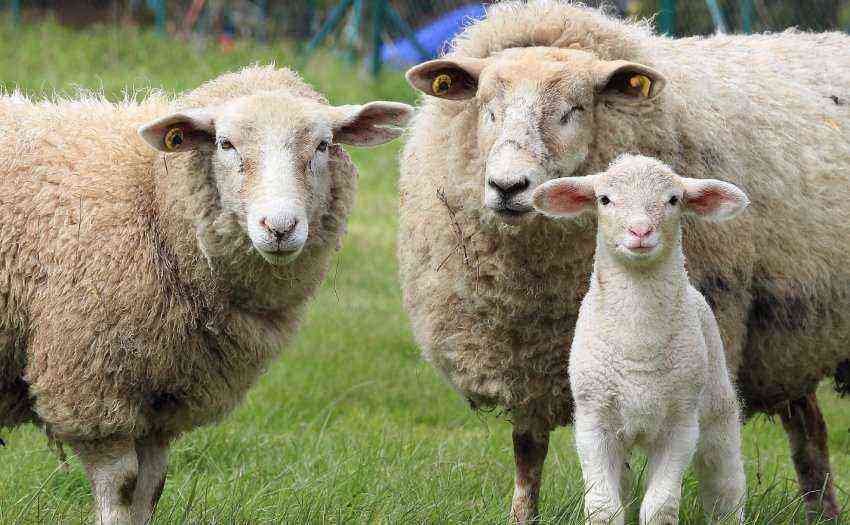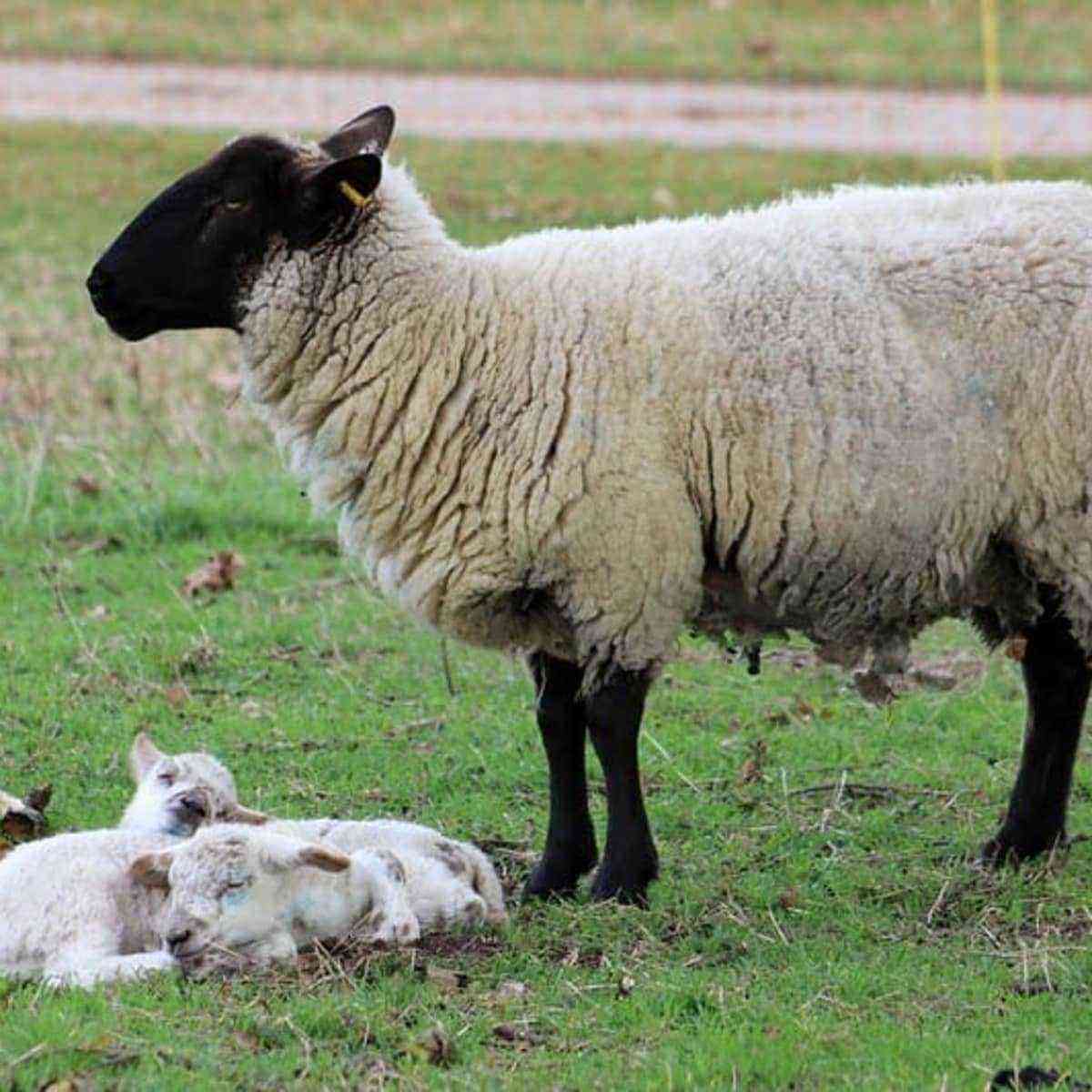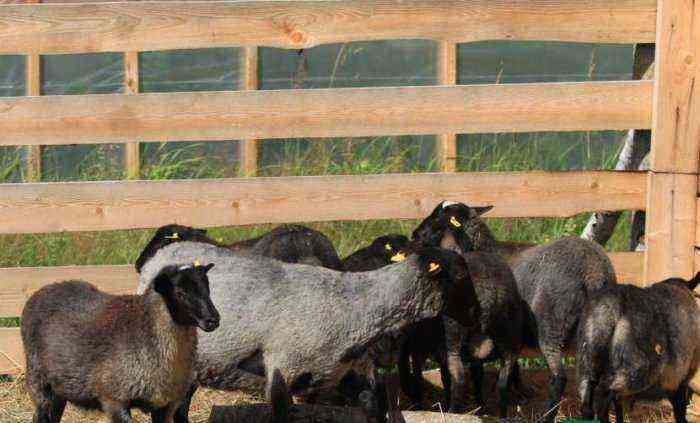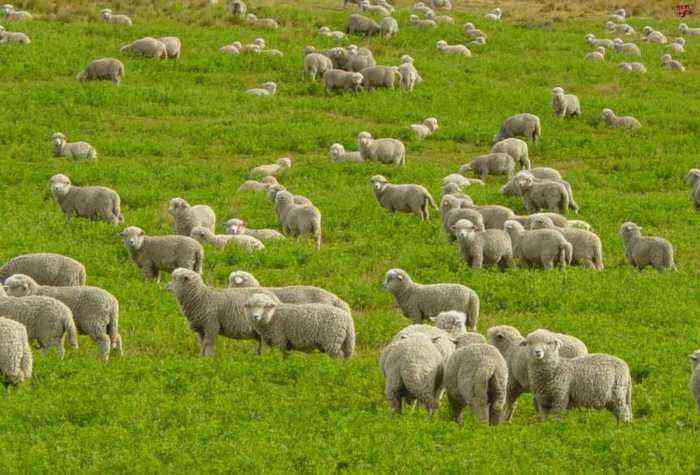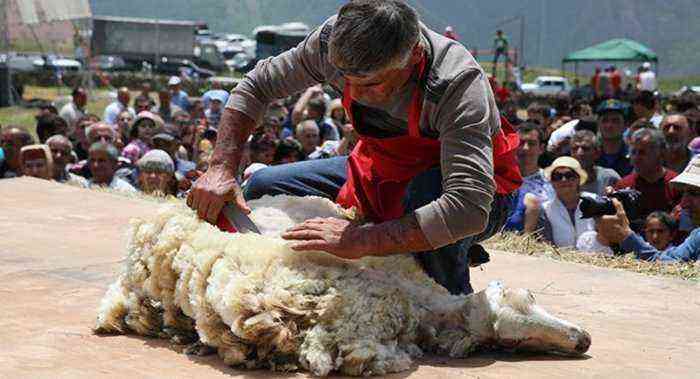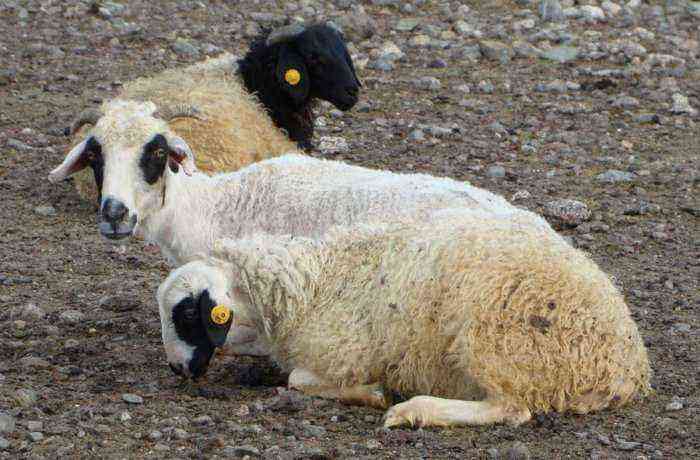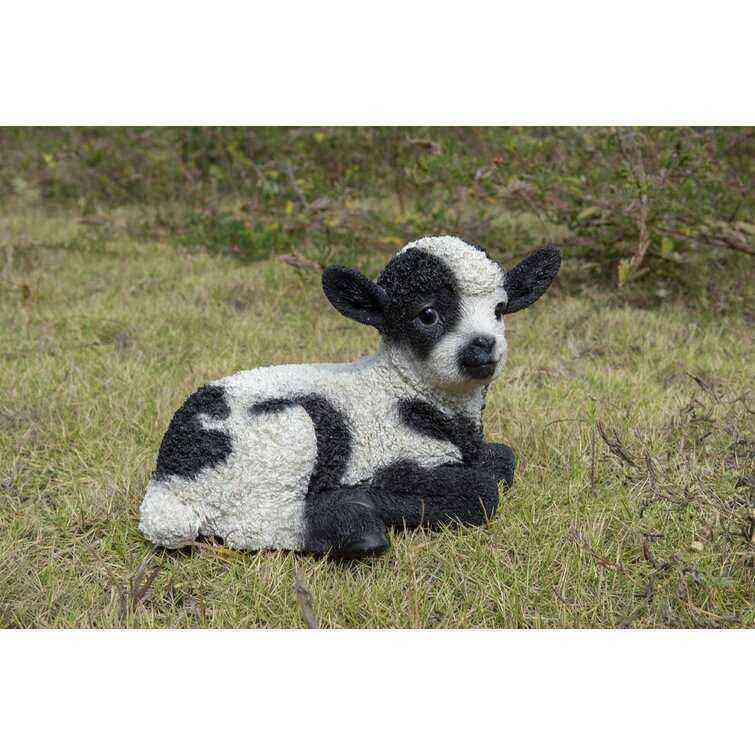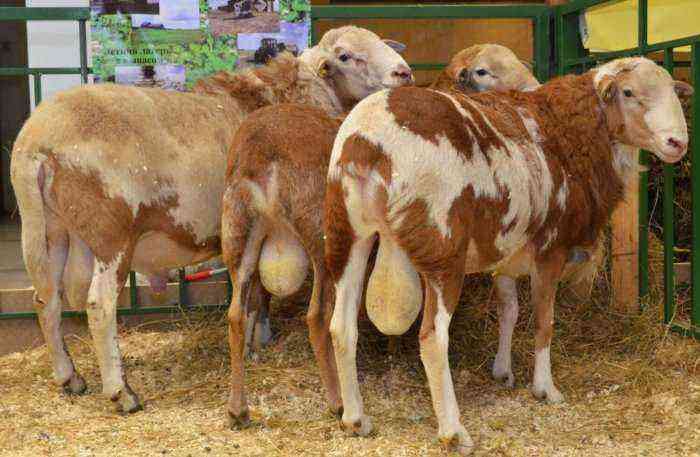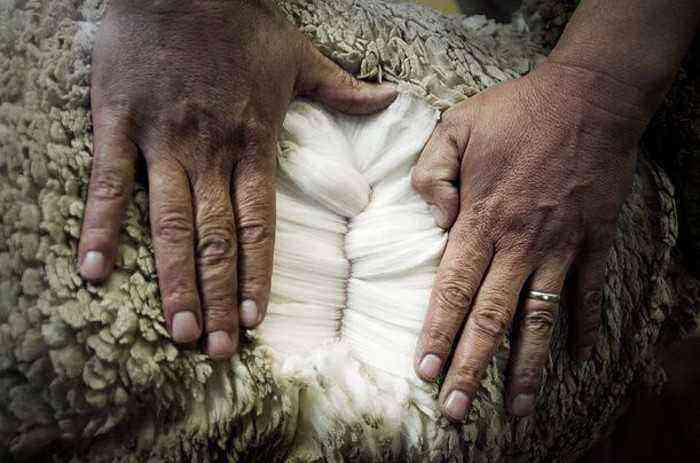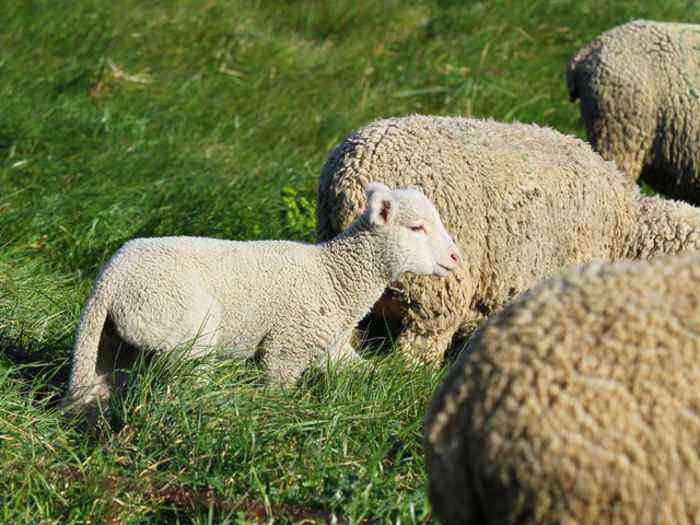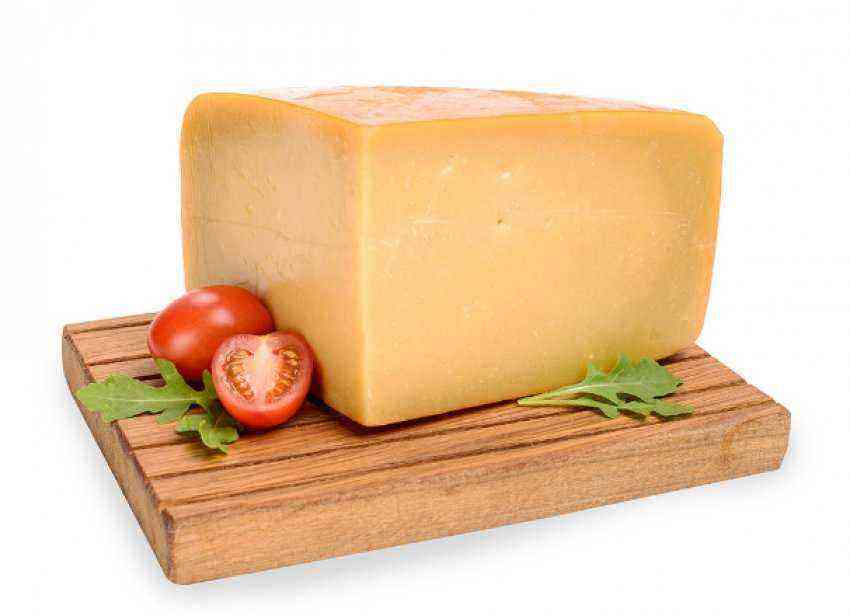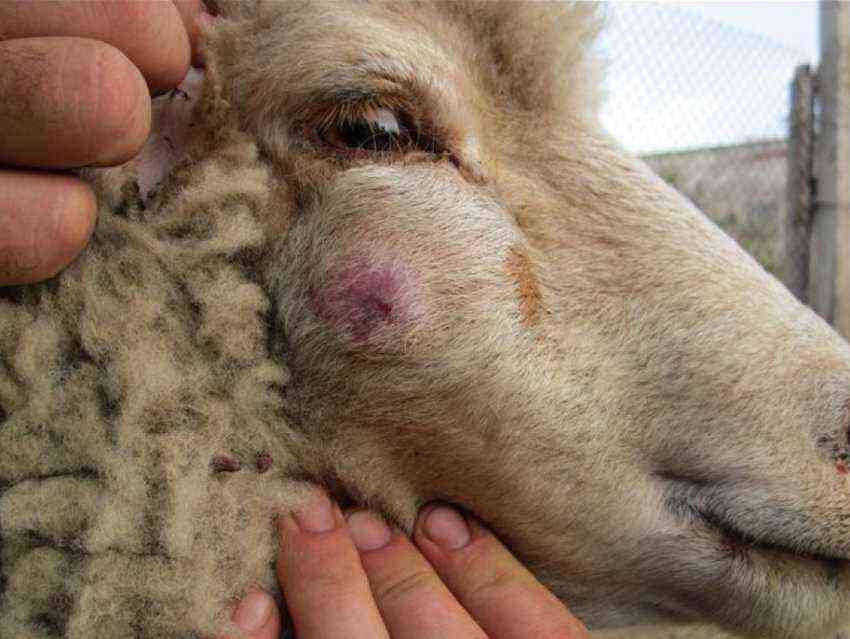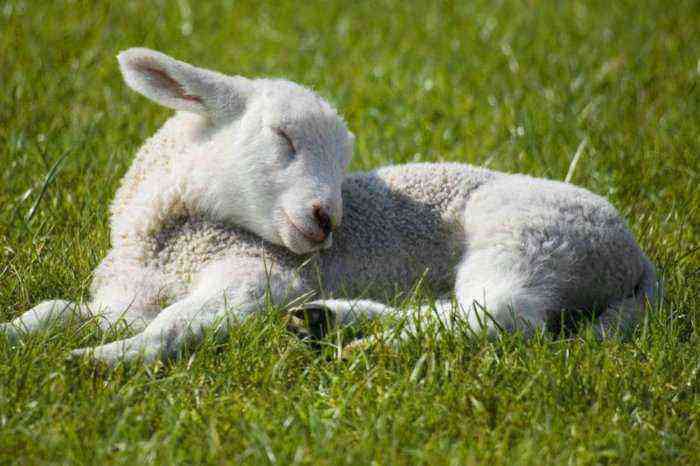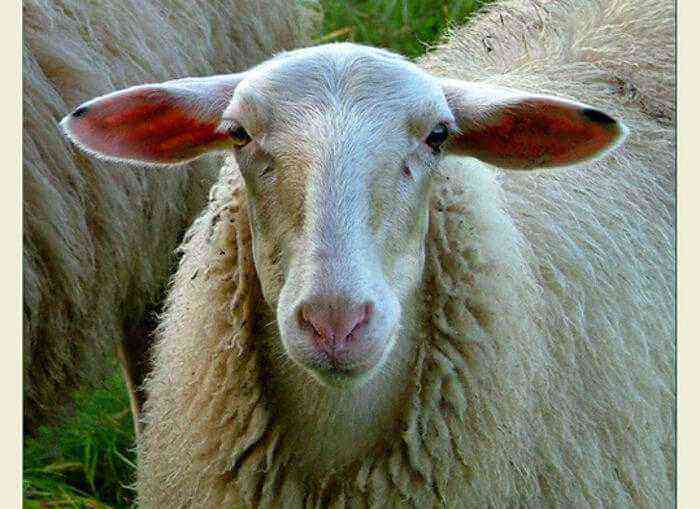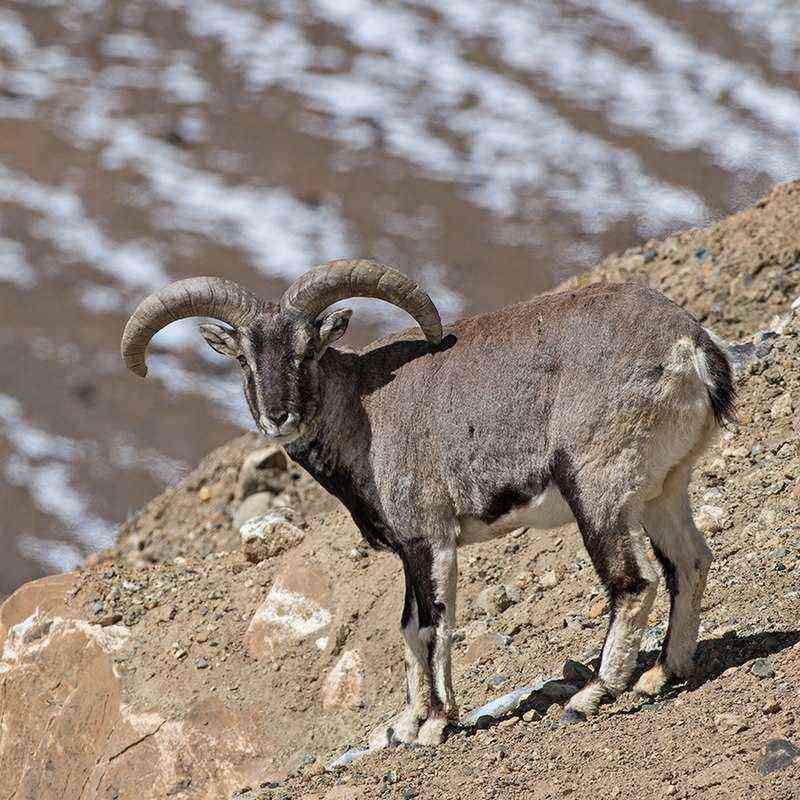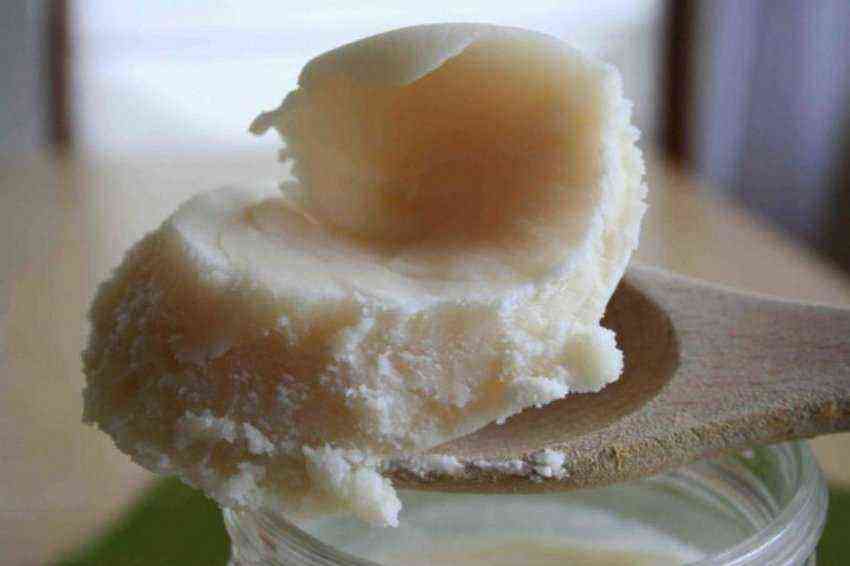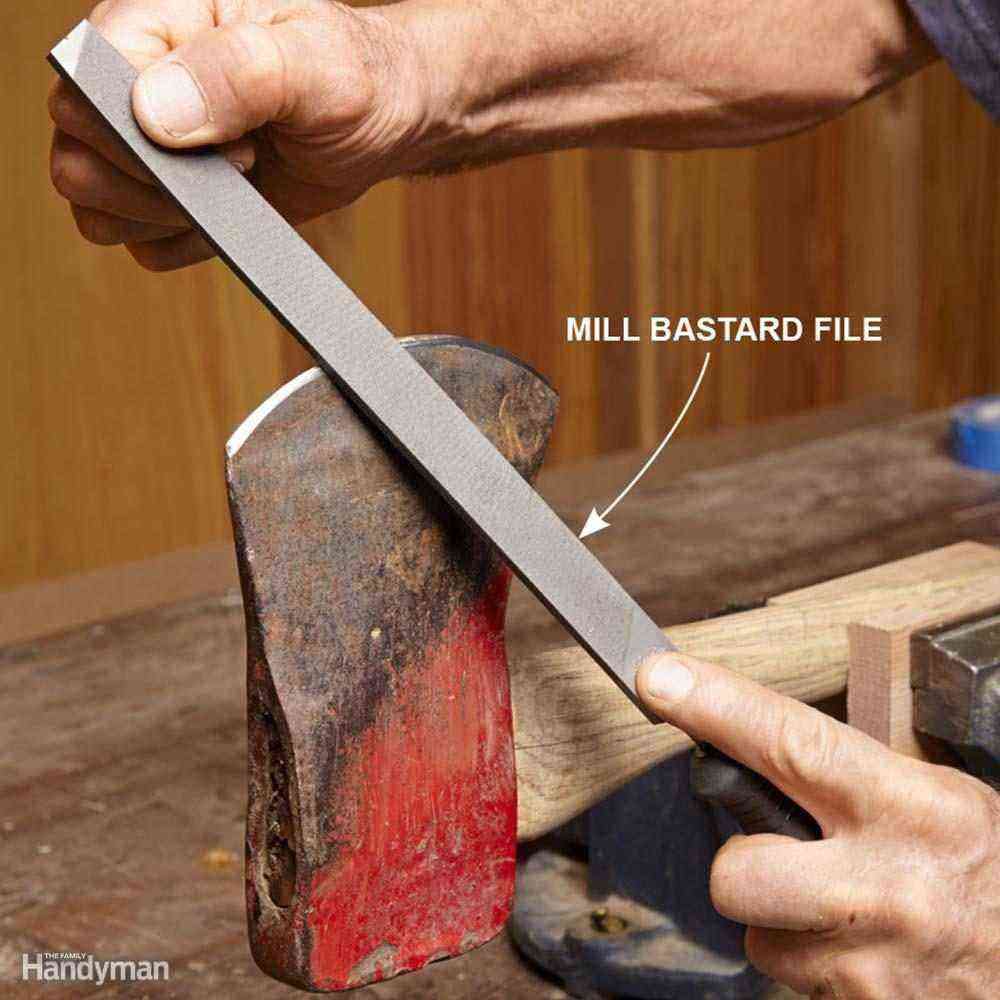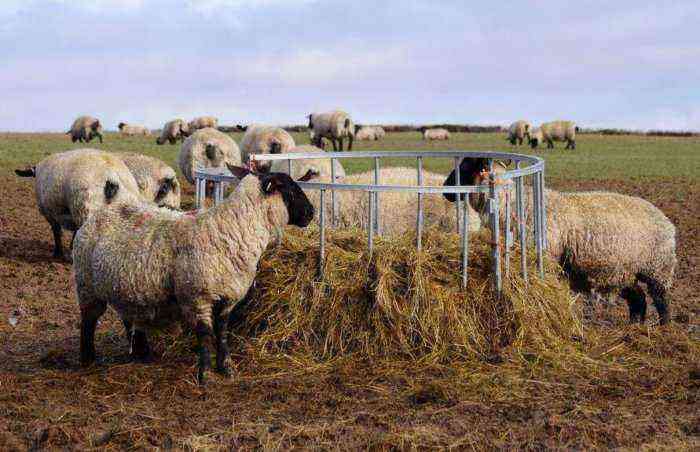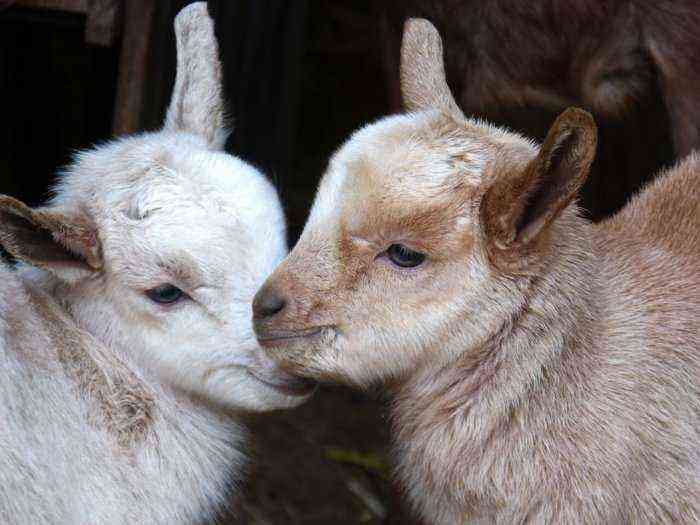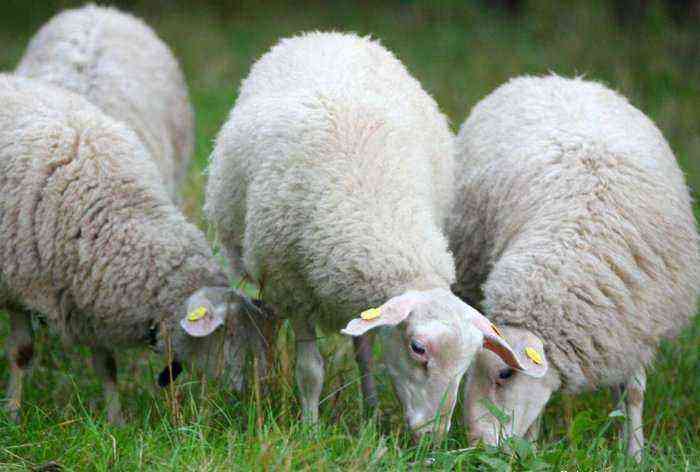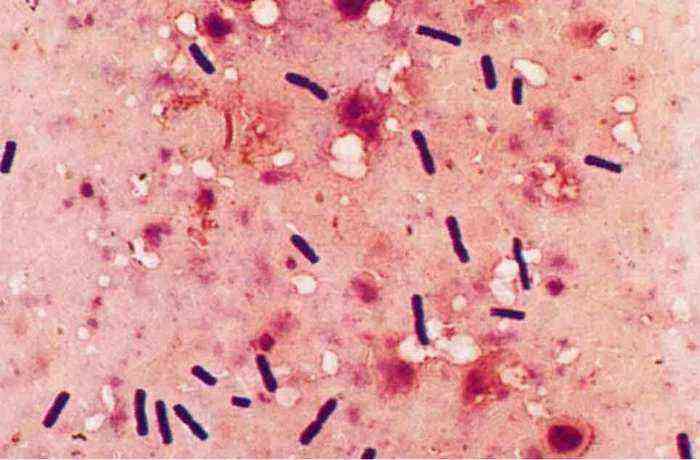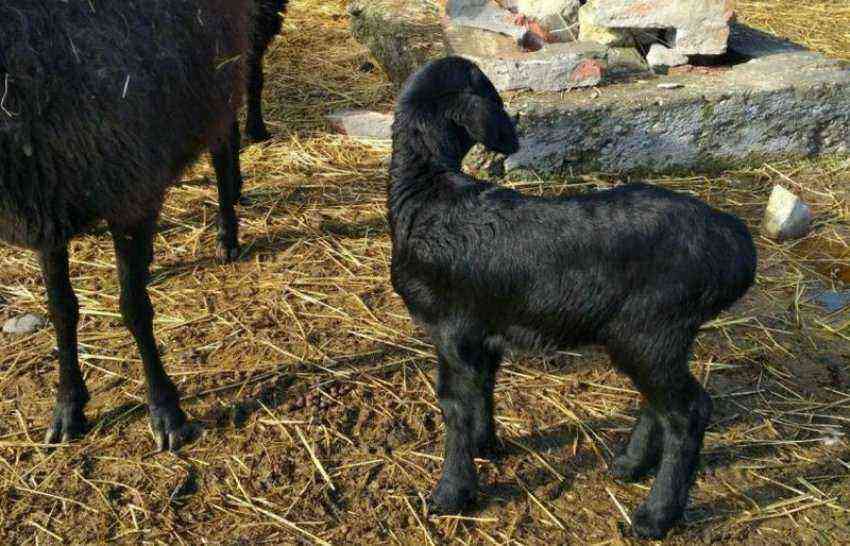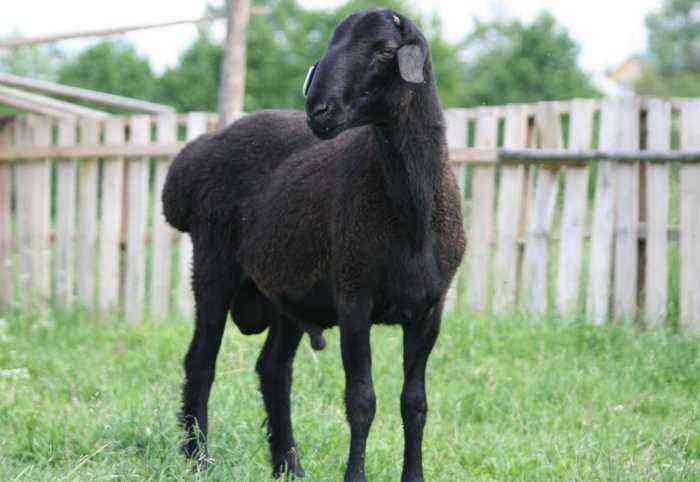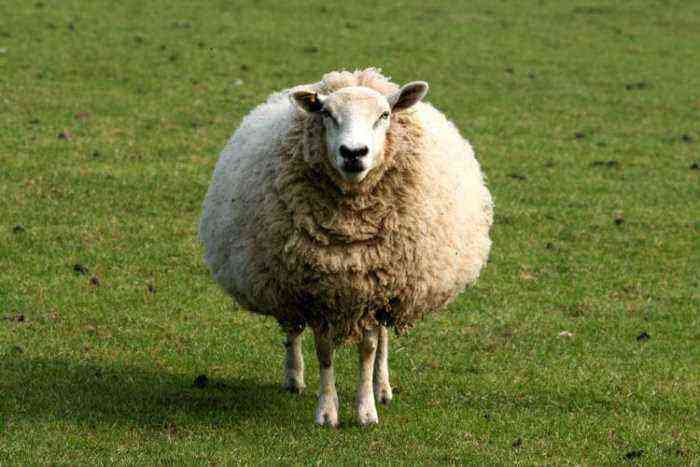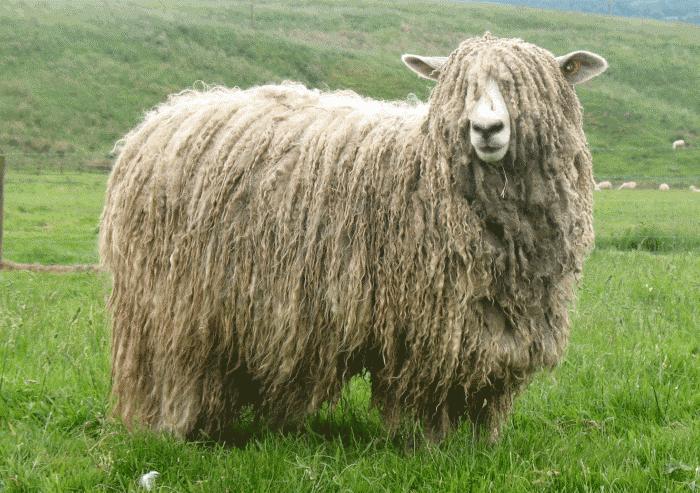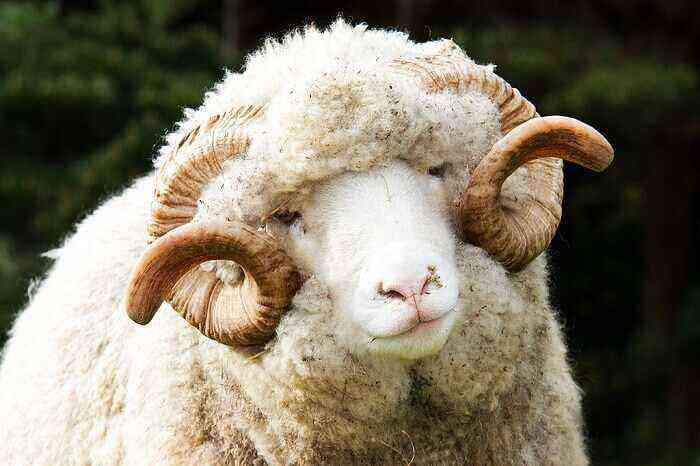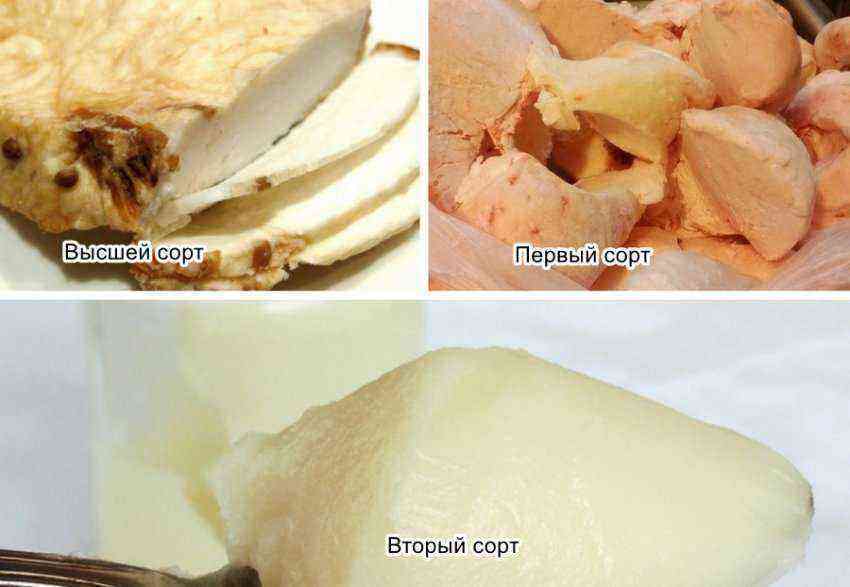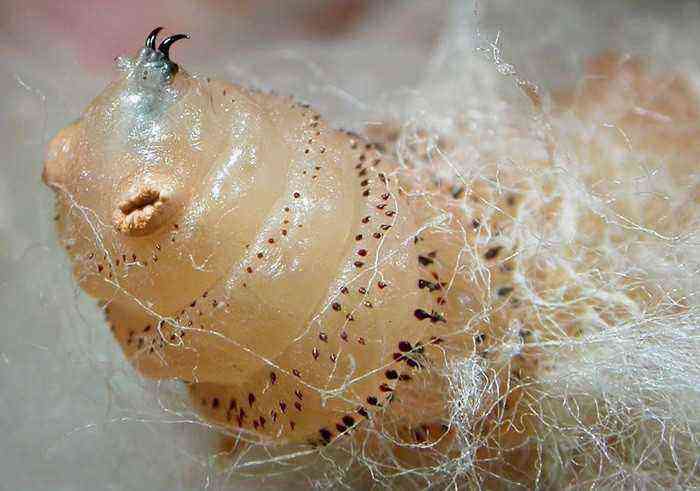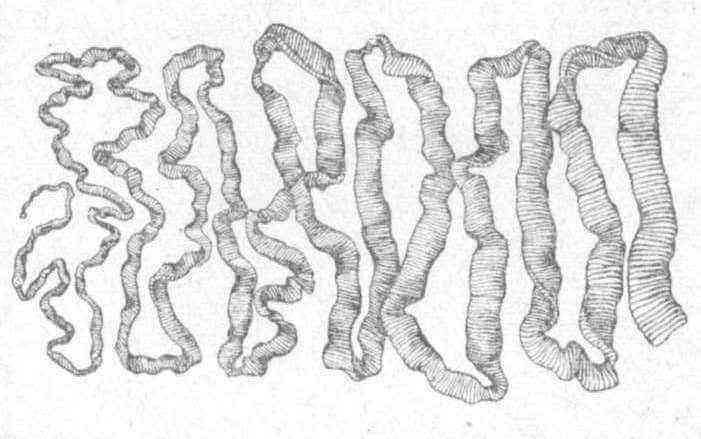Breeding sheep at home, with the right organization, can become a profitable business that will pay for itself in the shortest possible time. These animals, unpretentious to the conditions of keeping and feeding, give quite significant amounts of meat, wool, milk, and some breeds and fat. Moreover, each of the directions is considered promising and brings profit to the owner of the livestock. But, nevertheless, in order to reach the maximum performance, it is necessary to study in more detail the key points of keeping and breeding such living creatures.
Breeding sheep at home
The choice of direction and breed for breeding
Breeding sheep in domestic or industrial conditions begins with the selection of a suitable direction of sheep breeding and the appropriate breed. So, if a breeder plans to receive large cuts of high-quality wool from his livestock, then it is better to pay attention to the following varieties:
- Caucasian;
- Altai;
- merino;
- Stavropol.
In such animals, the fleece is thin and soft. This ensures a high demand for wool from buyers, which will accordingly provide more income.
The second direction is meat and wool. The fleece of such living creatures is inferior in quality to the indicated breeds, but their meat yield is much higher, as is its quality. All such varieties are divided into two main groups:
- Longhair (Kuibyshev, Romney March, Russian Longhair, Tien Shan).
- Shorthair (pedigree lines from Lithuania and Latvia).
The first group of breeds is also called semi-fine-fleece. Their wool is also widely demanded in the production of clothing and accessories. In addition, their meat has good taste.
Nastrigs of the second group are used for the production of cloth and carpets. But their meat is valued higher, and in terms of precocity they overtake other breeds.
Universal breed lines are bred to produce milk, wool and meat equally. These include:
- Karachaevskaya;
- balabas;
- Tushinskaya.
And the last – tail direction. Sheep of these breeds provide the owner with a large amount of fat. Such products are not so popular today. But, many breeders claim that fat tail breeds have especially tender and tasty meat. These types of livestock include:
- edilbaevskaya;
- Kalmyk;
- гиссарская.
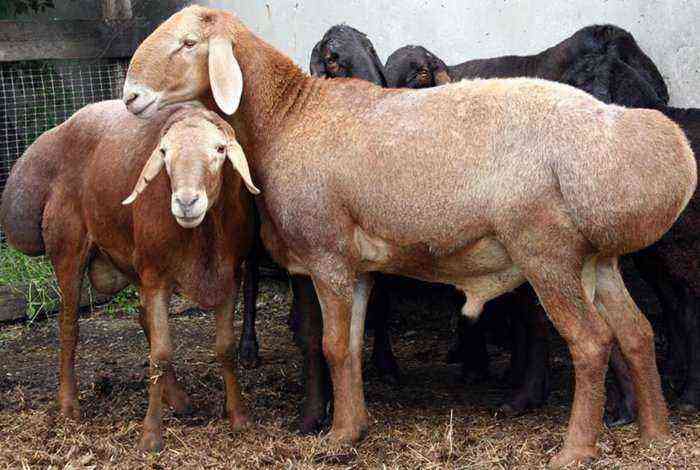
fat-tailed sheep
Each of the listed breed lines involves its own breeding nuances. Therefore, the choice is made on the basis of available resources, forage base and other conditions in which the sheep will be raised.
Sheepfold and paddock building
Under the sheepfold for keeping the flock, any room that is suitable in terms of area is suitable. Also, if necessary, you can build it on your own. Simplifies the task that such animals are kept in one herd, and not in separate stalls. Therefore, the amount of material and work required is significantly reduced.
But, nevertheless, during construction, several important points should be followed:
- Quality ventilation. Without the presence of a sufficient amount of clean air, the immunity of living creatures decreases, appetite is lost, as a result of which meat and wool productivity is sharply reduced.
- No drafts or dampness. Sheep easily withstand frosts down to -30 degrees. But small drafts in the barn often cause pneumonia in young animals. In addition, high humidity adversely affects the quality of wool.
- Free access to hay feeders. They are installed with a calculation of a length of 35 cm for each individual.
- Hard floor. The best option in this regard is concrete pouring, on top of which boards are placed. On a soft floor, ligaments suffer from living creatures.
- Heating. In regions with particularly severe winters, gas boilers or stoves are used. The temperature in the sheepfold in winter should not fall below 10-12 degrees. In warmer areas, high-quality insulation is sufficient.
Also, a mandatory point is the presence of a separate room or stall for queens with small lambs. When calculating the area of the barn, the following standards are used:
- for an adult ram you need – 1,5 square meters. m area;
- for lambs – 0,8-4 square meters. m (increases as you grow older);
- for the uterus with young animals – 2-3 square meters. m.
The construction process itself begins after the development of a clear drawing. As a material for the walls, wood, sandwich panels or bricks are suitable. From the inside they are insulated with mineral wool.
The important point is the foundation. In most cases, it is poured into the ground. But, in areas with an increased amount of moisture or frosty winters, a pile option can be used. It will help keep the heat in the room.
The windows in the barn are located at a height of 1,5 m. It is desirable to make the doors double-leaf. This will make it easier to get in and out of the flock.
It is also important to foresee the installation sites of volumetric drinkers in advance.
Walking
Walking is another important element of the sheepfold. Here animals breathe air and build muscle mass.
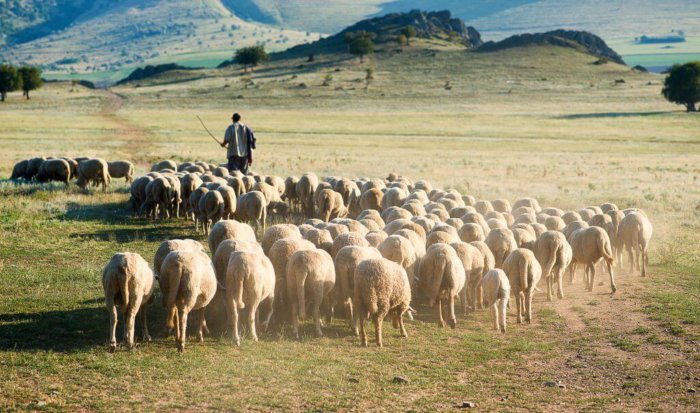
sheep grazing
It is a fenced large area on the south side of the barn. The area is calculated from the following ratio: 1 sq. m., for an adult ram you need 10 square meters. m. If there is enough space, the walking area should be equal to two areas of the sheepfold.
Attention! The floor of the site is also made solid. This will not only prevent injuries, but also simplify the cleaning of manure.
What to feed sheep in summer and winter?
Proper care of sheep, first of all, involves a rational choice of feed for livestock, which will ensure its health and high productivity. Moreover, the summer and winter diets differ in composition.
When feeding sheep in the summer, 90% of all their food is greens from pastures. In this regard, the most suitable option is sainfoin, clover, alfalfa. On such food, the animal quickly gains weight. Supplement green food with wheat, barley or oats in the amount of 200-300 g per head.
In winter, the basis of the diet is hay. The best option in this regard is dried clover and alfalfa greens. Also use meadow forbs. Straw will also help in feeding. It is harvested from barley, oats, legumes. Before serving, the straw must be steamed, as this makes it easier to chew and digest. Concentrates are also an essential component of the diet. In winter, their number is increased to 300-400 g per day.
Additionally, the menu of bright and rams may include:
- corn silage;
- beet;
- carrot;
- pumpkin;
- zucchini;
- haylage;
- fruit.
Root crops and gourds are fed either separately or pre-mixed with straw.
Be sure to introduce mineral supplements into the diet. In order to replenish the body of the animal with minerals, bone, meat and fish meal, as well as salt are used. The norm of the latter is 3 kg per year per head.
When installing drinkers, it should be borne in mind that one sheep drinks up to 10 liters of water per day. Therefore, clean drinking in containers should be constantly.
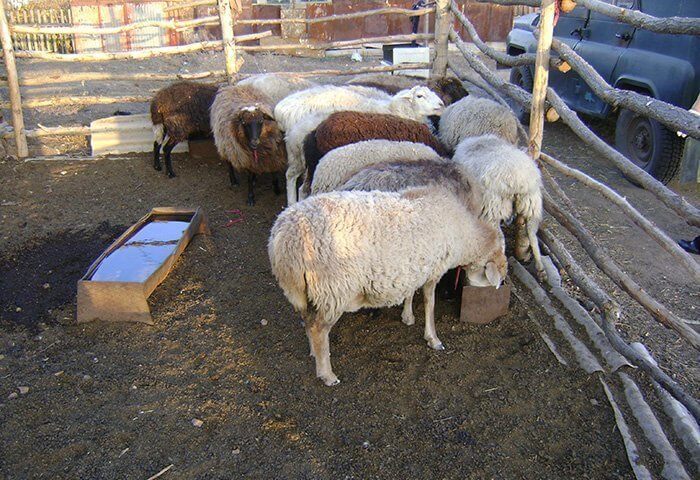
Sheep need access to water
The diet is also slightly different based on the physiological characteristics of living creatures. This is especially true for young animals and queens.
The diet of young animals
Lambs up to two weeks of age feed exclusively on the milk of the ewe. In its absence, young animals are fed cow’s milk. From 2-3 weeks, the diet is supplemented with oat concentrate. It is fed before and after feeding with milk, gradually increasing the portion from 50 to 400 g by the end of the first month. In parallel with 3 weeks, small portions of selected hay are introduced into the diet.
From the beginning of the second month, shoots of willow and birch are added to food. They allow you to maintain the vitamin balance of the body.
At three months, mother’s milk in lambs acts as a top dressing, and the main daily ration is as follows:
- hay in the amount of 100 g per kilogram of animal weight;
- 0,5 kg of grain mixture;
- grass;
- beets and carrots.
Also, for a change, young animals are fed 2 kg of steamed straw.
Starting from the age of six months, the lamb menu consists of the following components:
- 1 kg of hay;
- 500 g of vegetables;
- 200 g concentrated feed.
As a top dressing for a day, pour 8 g of table salt.
When implementing the meat direction of sheep breeding, they switch to the appropriate fattening in 4-5 weeks.
Queen nutrition
The composition of the diet in ewes is virtually the same as in other adult sheep. But, the feeding rates have been increased. Enhanced nutrition is provided to the uterus 1,5 months before mating. Such feeding lasts up to 2,5 months of pregnancy.
From the age of 2,5 months, sheep are provided with free grazing on pastures with the best green grass. And to increase the energy value of the diet, 100-400 g of concentrated feed is also introduced into it. Chalk, phosphates, needles, special vitamin-mineral complexes are used as top dressing.

Fresh grass for young
In winter, the daily diet of a pregnant ewe is as follows:
- hay – 1,5 kg;
- silage – 2-2,5 kg;
- root crops – 2 kg;
- grain or other concentrates – 250-300 g.
Important! After lambing, the amount of concentrates, silage and root crops is increased to improve the milkiness of the uterus.
Sheep breeding methods and their characteristics
The maintenance of sheep also requires the correct implementation of the reproduction of such animals. Only in this case, the livestock will grow, and with it the income that the sheep farm will bring.
In fact, sheep breeding is carried out by two main methods, each of which involves its own characteristics:
- Natural insemination. This method is most often used in small private farmsteads. It consists in the fact that along with the yars, the owner also buys one ram. He is kept separately until the moment of mating, after which he is allowed to go to the brothels and taken away only after the end of the pregnancy of the queens.
- Artificial insemination. It is used on large farms. This method is indispensable when trying to inseminate a large number of females from one ram. It also allows you to use the seed of famous sires, which is thus easier to transport to the farm.
Breeders also practice intrabreeding and interbreeding. In the first case, the purity of the breed line and its quality are observed. In the second case, the offspring receive 50% of the characteristic features from each of the sheep varieties used.
Preparing for the mating
Preparation for mating sheep begins already 2-2,5 months before the expected time of the procedure. At this time, the lambs are taken away from the queens (if they have reached the age of 3 months). Immediately after this, the animals are diagnosed for health problems and suitability for mating. Those individuals are culled who have:
- mastitis;
- pneumonia and other diseases of the respiratory organs;
- serious liver disease;
- ailments of a parasitic nature;
- severe tooth wear and a number of other serious health problems.
Another selection criterion is the age of the bright. Sexual maturity in such animals occurs at 6-7 months. But her body is still growing. Therefore, in most farms, mating is carried out only when the sheep reach the age of 1,5 years.
In the case of rams, the focus is on conformation and hoof quality. Previous cases are also taken into account.
Selected queens are provided with enhanced nutrition. But the condition of the animal must be carefully monitored. The female should be well-fed, but not fat.
Mating is carried out when the ewe begins sexual hunting. This is evidenced by the redness of the genital organs and the secretion of mucus from them.

Sheep mating
Lambing
The ewe is also prepared for lambing. Such training includes:
- cutting hair on the back of the legs, around the anus and genitals;
- transfer of the animal to a separate room or corner of the sheepfold;
- lining the room with a thick layer of straw.
The following signs indicate the imminent onset of labor in a lamb:
- construction of a nest by the uterus;
- quite severe swelling of the vulva;
- change in the consistency of mucus to completely transparent;
- the udder enlarges and colostrum is released from it when pressed.
Attention! When these points are identified, the sheep in a separate paddock is checked every hour. Lambing in her can occur lying or standing. Immediately after the end of the process, they check whether all parts of the placenta have left the uterus. Then they drink it with warm water and leave it with the kids.
Lamb care
Newborn young are wiped dry with straw. After that, they bring a sheep to the muzzle so that she licks them. It is also necessary to ensure that all lambs drink colostrum from the udder as quickly as possible. It provides children with strong immunity to many diseases.
If the uterus has several lambs, she is left with only two. The rest are divided between the rest of the queens who have given birth, or they are fed artificially with cow’s milk.
What is wrong with sheep?
Sheep are susceptible to many infectious and non-infectious diseases. The main among them are the following:
- Avitaminosis. Most often, sheep have beriberi A and D. Symptoms are weakness, lack of appetite, curvature of the limbs, and decreased immunity in animals.
- Bronchopneumonia. The cause of the disease is poor-quality conditions of keeping and feeding, overheating or hypothermia of sheep, lack of vitamins. Accompanying the disease is a violation of the rhythm of breathing, lethargy of the animal, coughing, the appearance of mucus in the nose and mouth, delays in growth and development.
- Enterotoxemia. Poisoning of the body due to eating food that has been contaminated with toxins produced by a special group of microbes. Manifested in fever, convulsions, general depression, indigestion of the animal. Often, cases of the disease end in sudden death.
- Leptospirosis. The reason is the infection of animals with leptospira. Characteristic signs: anemia, fever, general depression, yellowing of the mucous membranes, increased fluid intake.
- Mastitis. It develops as a result of damage to the mammary gland by bright microbes as a result of mechanical damage or milk stagnation. The disease is accompanied by swelling and redness of the udder, which can pass to the inside of the legs. Also, the symptoms include fever, partial hair loss, general weakness.
If the main points of care are observed, sheep breeding can become an extremely profitable business that requires minimal financial costs. In addition, the maintenance of several such animals provides the family with a sufficient amount of healthy milk and high-quality meat. That is why the popularity of sheep breeding is growing again, gradually catching up with the breeding of chickens, pigs and cattle.


